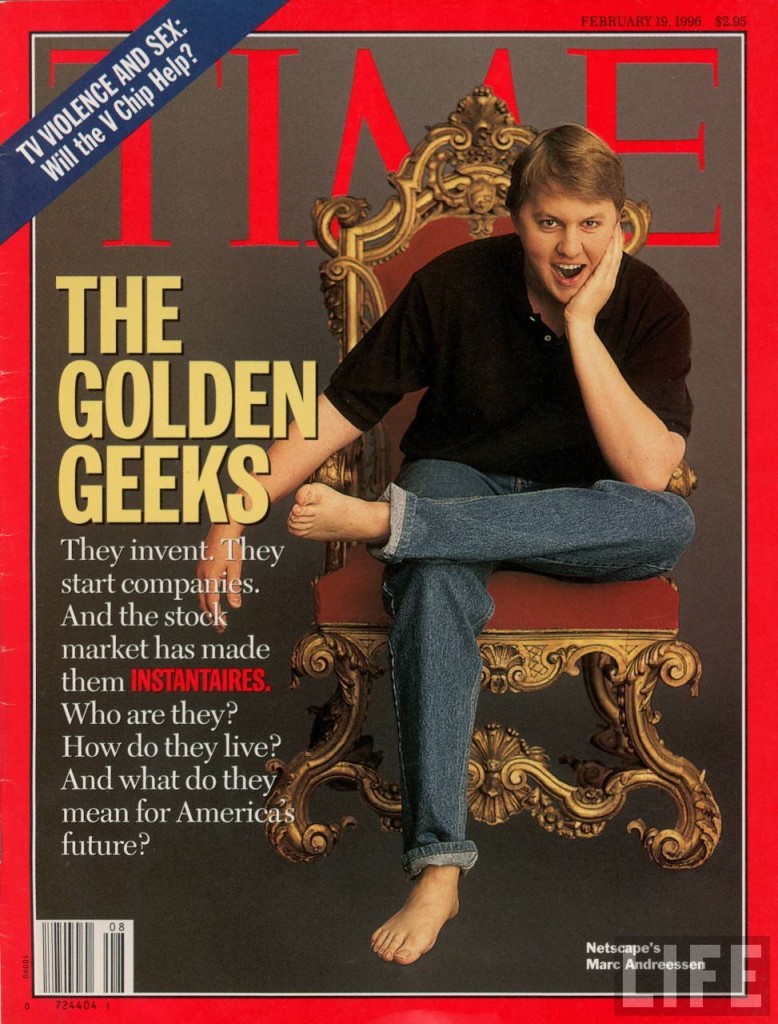Summary:
Netscape launches and is a smashing success. Jim Barksdale officially comes on as CEO. Netscape fights off legal threats from the NCSA and the University of Illinois. Despite it’s young age and lack of profits, Netscape files to go public in THE historic IPO of the era. Flush with cash, flush with fame, Netscape girds for battle with a new foe: Microsoft.
Listen:
Bibliography:
- http://www.jwz.org/gruntle/newsrelease1.html
- http://www.businessweek.com/stories/1994-10-23/from-the-man-who-brought-you-silicon-graphics-dot-dot-dot
- http://money.cnn.com/magazines/fortune/fortune_archive/2005/07/25/8266639/
- http://en.wikipedia.org/wiki/File:Layout_engine_usage_share-2009-01-07.svg
- Speeding the Net: The Inside Story of Netscape and How It Challenged Microsoft; Quittner, Joshua; Michelle Slatalla; Atlantic Monthly Press, 1998
- http://content.time.com/time/magazine/article/0,9171,984131,00.html
- http://books.google.com/books?id=fzoEAAAAMBAJ&q=mundane+collection+of+not+entirely+debugged+device+drivers#v=snippet&q=mundane%20collection%20of%20not%20entirely%20debugged%20device%20drivers&f=false













I cannot remember if the parts about the “internet superhighway” occurred in parts 1, 2 or 3 of Chapter 1, but I did have a couple of quick corrections:
– Ray Smith was the CEO of Bell ATLANTIC, not Bell South.
– Similarly, it was Bell Atlantic that had the proposed merger in place with TCI, not Bell South.
– A minor point, but you characterized GTE as a “baby bell.” This was not accurate; when ATT split up into the seven regional bells (RBOCS), they were Nynex, Bell Atlantic, BellSouth, Ameritech, SWBell, USWest and Pac-Tel (heading roughly east to west). GTE had always been a national telcom company, a competitor throughout the land to ATT and stayed that way after the breakup. Only later, with deregulation and the allowance of significant mergers, did Nynex, Bell Atlantic and GTE team up to become the renamed Verizon.
Excellent catches! This is exactly the sort of fact checking I’m happy to have!
An opinion on the reasons for the failure of the Information Superhighway projects; I have always believed that a huge contributing factor to the failure of the early Information Superhighway projects was not only a bad choice of medium (as you pointed out), but also just the pure lack of bandwidth into each home. Pehaps you’ll address this later on …
In the mid-late 90s, everyone was still on dialups. You couldn’t possibly stream video effectively that way. ISDN into the home was a great idea (and worked great) but wasn’t going to be cost effective for the consumer, since it focused on pure data and there wasn’t enough demand. It wasn’t until the invention of DSL that enough bandwidth to the home was capable of even beginning to stream video effectively. Then of course FIOS and fiber to the house has now basically enabled an entire generation of video streaming (Netflix, Hulu, etc) over the internet, a concept that was completely unheard of 15 years ago.
I maintain that these ideas were all around in the .com era … they just had to wait for networking technology to arrive to enable them. If fios had existed in 1995, I think the cable/telecom companies would have pounced on it and would have shoved their information superhighway concepts into the consumer’s faces.
Kind of… but keep in mind, the InfoHighway projects, were (for the most part) experiments using coax cable systems. So the bandwidth (theoretically) was there, if you updated the cable systems to the modern type. This is the point I was trying to make with the Microsoft at the Dawn of the Internet Era episode. Gates saw the future coming. And he was waiting for it. He didn’t think anything would really pop off until bandwidth caught up. The whole process of him “getting” the internet was realizing he couldn’t wait any longer. Stuff was already moving ahead, whether or not the bandwidth was quite there yet. The web exploded sort of in spite of the bandwidth scarcity of the time.